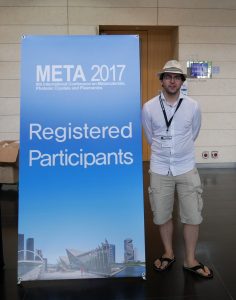
Nobel Prize laureates who have worked in Lebedev Institute, Moscow.
I was honoured to give an invited oral presentation (30 min) at the Ultrafast Optics conference held at the Lebedev Institute, Moscow. The audience at this conference was truly exceptional. The impact of the talk was excellent and the questions from the audience were very constructive. Many thanks to Prof. Uryupin and to Prof. Kudryashov for the organization.
Title of the presentation: Surface Plasmon Polaritons: their properties for different metals and the constitutive role in ultrafast laser processing.
Authors: T. J.-Y. Derrien¹, J. Bonse², Y. Levy¹, I. Gnilitskyi³, L. Orazi³, T. Mocek¹, N. M. Bulgakova¹
¹HiLASE Centre, Dolní Břežany, Institute of Physics AS CR, Za Radnici 828/5, 25241 Dolni Brezany, Czech Republic
²Bundesanstalt für Materialforschung und -prüfung (BAM), Unter den Eichen 44-46, 12203 Berlin, Germany
³DISMI – University of Modena and Reggio Emilia, Italy
 Our latest paper on the mechanisms of highly regular laser nanostructuring was presented at the Advanced Electromagnetics Symposium (AES), Incheon, close to Seoul, South Korea.
Our latest paper on the mechanisms of highly regular laser nanostructuring was presented at the Advanced Electromagnetics Symposium (AES), Incheon, close to Seoul, South Korea. A new publication has been released in SPIE Proceedings. It presents a large scale model of ultrashort laser modification of semiconductors that was developed at Hilase to predict the changes of silicon material upon intense pulsed laser irradiation. A more complete publication aiming to demonstrate the level of prediction we have reached is under preparation.
A new publication has been released in SPIE Proceedings. It presents a large scale model of ultrashort laser modification of semiconductors that was developed at Hilase to predict the changes of silicon material upon intense pulsed laser irradiation. A more complete publication aiming to demonstrate the level of prediction we have reached is under preparation. A 4-years PhD position has opened at Hilase (Prague, Czech Republic) on modelling of multilayered materials upon ultrashort laser irradiation. The offer is available
A 4-years PhD position has opened at Hilase (Prague, Czech Republic) on modelling of multilayered materials upon ultrashort laser irradiation. The offer is available  One of the great advantages to develop with Python is the capacity to work on any environment.
One of the great advantages to develop with Python is the capacity to work on any environment. Report on the QuantumLaP project will be presented as a 1h seminar at Hilase Centre, on the 28th of March 2017, 2pm.
Report on the QuantumLaP project will be presented as a 1h seminar at Hilase Centre, on the 28th of March 2017, 2pm. A new collaborative paper was recently published, where
A new collaborative paper was recently published, where  Our new paper together with several famous authors in modeling the laser-matter interaction was just published online in MRS Bulletin (impact factor 6.06). And we are proud to see that it actually made the cover of the journal. :o)
Our new paper together with several famous authors in modeling the laser-matter interaction was just published online in MRS Bulletin (impact factor 6.06). And we are proud to see that it actually made the cover of the journal. :o) The 6th international LIPSS (Laser Induced Perodic Surface Structures) workshop was held in FORTH University of Heraklion, in Crete.
The 6th international LIPSS (Laser Induced Perodic Surface Structures) workshop was held in FORTH University of Heraklion, in Crete.